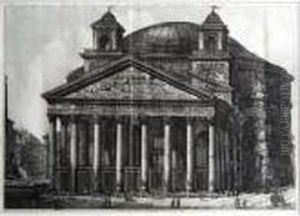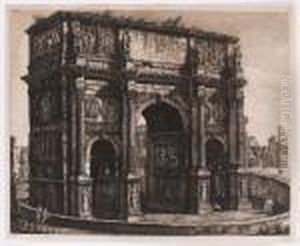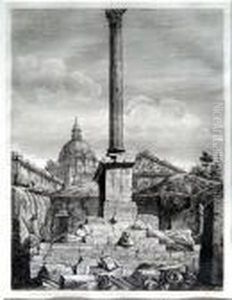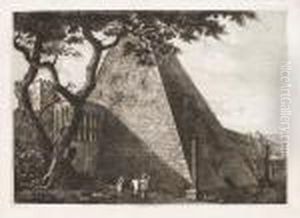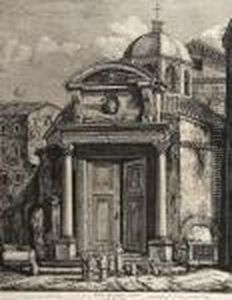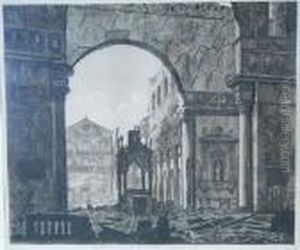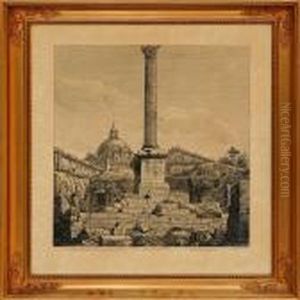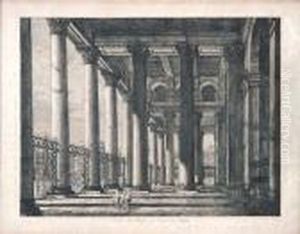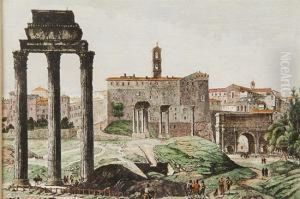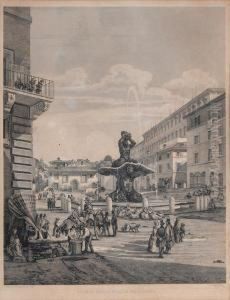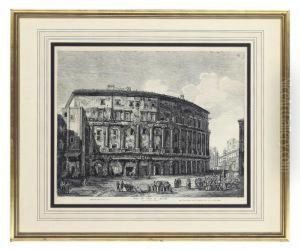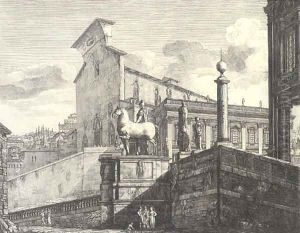Luigi Rossini Paintings
Luigi Rossini was an Italian artist known for his etchings and engravings of Roman architecture. Born on October 12, 1790, in Ravenna, Italy, Rossini was initially trained as an architect and draftsman. He moved to Rome in 1814, where he was deeply inspired by the city's ancient ruins and Renaissance buildings. Rossini's interest in architecture and his skill in drawing led him to specialize in creating detailed prints of Rome's architectural wonders.
Rossini's work was influenced by the earlier artist Giovanni Battista Piranesi, famous for his etchings of Rome. However, Rossini developed his own unique style, combining precise architectural detail with romanticized, picturesque elements. His most significant work is 'Le Antichità Romane' (Roman Antiquities), a collection of 101 large-scale etchings published between 1819 and 1823. This series showcases the grandeur of ancient Roman architecture, including views of the Colosseum, the Pantheon, and the Roman Forum.
Throughout his career, Rossini continued to produce series of etchings that depicted not only the architectural heritage of Rome but also other Italian cities like Pompeii. His works were highly regarded for their technical excellence and artistic quality, contributing to the 19th-century interest in classical heritage and influencing the field of architectural history.
Despite his success, Rossini faced financial difficulties later in life, in part due to the changing tastes of the public and the rise of photography, which offered a new way to capture and disseminate images of architecture. Luigi Rossini died on June 17, 1857, in Rome. Today, his etchings remain valuable records of Rome's architectural history and are collected and studied for both their artistic merit and historical significance.
